Most 1776-1976 Bicentennial Half Dollars are worth 50 cents in circulation. However, coins with “S” mint marks (especially 40% silver versions) are valued at $7.50+ based on silver content. Uncirculated coins in MS-65 condition range from $8-$30+, while error coins like Doubled Die can fetch $1,250+. Key factors affecting value include mint mark (None/Philadelphia, “D”/Denver, or “S”/San Francisco), condition, composition (clad vs. silver), and errors such as doubled dies, missing letters, or off-center strikes. Coins graded MS-69 or MS-70 can command thousands due to their rarity in perfect condition.
Check your pocket change carefully. While most Bicentennial Half Dollars sitting in your drawer are worth exactly 50 cents, specific varieties and errors can command prices ranging from a few dollars to several thousand. The difference lies in understanding mint marks, composition, and what errors professional collectors actually pay premium prices for. Here’s everything you need to know about identifying valuable examples.
Understanding the Three Types of Bicentennial Half Dollars
The United States Mint produced Bicentennial Half Dollars at three facilities between 1975 and 1976, despite all coins bearing the dual date “1776-1976.” Each facility created distinct versions with different values today.
Philadelphia produced coins without any mint mark, striking over 234 million pieces for general circulation using copper-nickel clad composition. These represent the vast majority of Bicentennial halves you’ll encounter. Denver followed with 287 million “D” mint mark coins, also in clad composition. San Francisco took a different approach, producing both clad proof coins and special 40% silver versions exclusively for collectors.
The composition makes an enormous difference in value. Standard clad coins contain a copper core with copper-nickel outer layers and no precious metal content. The San Francisco silver-clad pieces contain 40% silver (11.5 grams total weight with 4.6 grams of actual silver), giving them intrinsic melt value around $7.50 based on current silver prices, before any collector premium.
Actual Market Values by Mint Mark and Condition
| Mint Mark | Grade/Type | Current Value | Notes |
|---|---|---|---|
| No Mint Mark (Philadelphia) | Circulated | $0.50 | Face value only |
| No Mint Mark | MS-65 | $8-12 | Clean, brilliant luster required |
| No Mint Mark | MS-67 | $45-75 | Significantly rarer |
| D (Denver) | Circulated | $0.50 | Face value only |
| D (Denver) | MS-65 | $10-15 | Slightly higher than Philadelphia |
| D (Denver) | MS-67 | $65-95 | Premium for exceptional quality |
| S (San Francisco) | Clad Proof PR-69 | $8-15 | From proof sets only |
| S (San Francisco) | Silver Uncirculated MS-65 | $15-25 | Contains 40% silver |
| S (San Francisco) | Silver Proof PR-69 | $18-30 | Most common silver version |
The grading scale runs from Good (G-4) for heavily worn coins through About Uncirculated (AU-50, 53, 55, 58) up to Mint State (MS-60 through MS-70). Most circulated Bicentennial halves grade somewhere between Fine (F-12) and Extremely Fine (EF-40), keeping them at face value.
Professional grading services like Professional Coin Grading Service (PCGS) and Numismatic Guaranty Company (NGC) assign precise numerical grades. An MS-69 represents a nearly perfect coin with only microscopic imperfections visible under 5x magnification. MS-70 indicates absolute perfection, exceedingly rare for these coins.
High-Value Errors Worth Searching For
Error coins represent minting mistakes that escaped quality control. The Bicentennial Half Dollar has several documented errors commanding significant premiums.
Doubled Die Obverse (FS-101)
The most valuable regular error shows prominent doubling on “IN GOD WE TRUST,” “LIBERTY,” and the date. A PCGS MS-67 example sold through Heritage Auctions in 2023 for $1,680. The FS-101 variety exhibits strong doubling visible to the naked eye on “TRUST” and “LIBERTY.” In MS-65 condition, these typically bring $400-600, while MS-66 examples range from $800-1,200.
Lesser doubled die varieties exist with weaker doubling, valued at $75-250 depending on prominence and grade. Always examine the lettering around the obverse rim with 10x magnification.
Doubled Die Reverse (DDR)
Reverse doubling appears on “INDEPENDENCE HALL,” particularly in the columns and windows. The strongest variety (FS-801) shows clear separation in the vertical columns. An NGC MS-66 specimen brought $890 at auction in 2022. MS-65 examples typically sell for $350-500.
Look for doubling in “UNITED STATES OF AMERICA” and “HALF DOLLAR” as well. Minor reverse doubling might add $50-150 to an otherwise common coin in uncirculated condition.
Missing or Weak Letters
Strike-through errors sometimes cause letters to appear weakly or disappear entirely. The most documented example shows a weak or missing “F” in “OF” on the reverse. A PCGS MS-65 example sold for $385 in 2023.
Similarly, weak strikes on “INDEPENDENCE” occasionally omit the final “E.” Values range from $125 for MS-64 to $450 for MS-66, based on Stack’s Bowers auction records.
Off-Center Strikes
Coins struck 5-10% off-center with full date visible bring $75-200. Examples 15-25% off-center range from $200-500. A dramatic 40% off-center strike in MS-63 sold for $1,150 through Great Collections in 2023. The key factors are percentage off-center and whether both the date and design remain identifiable.
Wrong Planchet Errors
Extremely rare instances exist of Bicentennial half dollar dies striking foreign planchets. A Bicentennial half design on a quarter planchet sold for $3,200 in 2022. These represent minting accidents where planchets intended for different denominations mixed.
Identifying Silver Versus Clad Compositions
Distinguishing silver from clad Bicentennial halves requires careful examination since both can bear the “S” mint mark.
The weight test provides the most reliable method. Silver-clad coins weigh 11.5 grams while copper-nickel clad pieces weigh 11.34 grams. A precise digital scale reading 0.01 grams shows the difference.
The edge examination offers a visual method. Clad coins display a distinct copper-colored stripe through the middle of the edge where the copper core shows between the nickel outer layers. Silver-clad coins show a consistent silver-gray color across the entire edge with no copper stripe visible.
The magnet test works because nickel is magnetic while silver is not. A strong neodymium magnet will weakly attract clad coins but will not attract silver versions. This test has limitations since the attraction to clad coins is subtle, not strong.
The sound test involves balancing the coin on your fingertip and tapping it with another coin. Silver produces a clear, high-pitched ring lasting several seconds. Clad coins create a duller sound that dies quickly. This requires practice to distinguish reliably.
All silver Bicentennial halves came in special U.S. Mint sets, never released into circulation. If you found it in pocket change, it’s definitely clad regardless of the mint mark.
Grading Standards That Determine Value
Understanding grading dramatically affects your ability to assess value accurately. The difference between MS-65 and MS-67 can mean $10 versus $75 for the same coin.
MS-60 to MS-63 (Uncirculated)
These grades show no wear from circulation but have visible bag marks, scratches, or impaired luster. MS-60 might have several distracting marks. MS-63 displays better eye appeal with fewer marks, mostly in less prominent areas. These typically bring modest premiums, $2-5 above face value for clad examples.
MS-64 to MS-65 (Choice Uncirculated)
MS-64 shows good luster with a few small marks. MS-65 represents the first major value jump, requiring strong luster and only minor marks in non-focal areas. The difference between MS-64 ($6-8) and MS-65 ($10-15) reflects this quality threshold.
MS-66 to MS-67 (Gem Uncirculated)
These grades demand exceptional eye appeal. MS-66 has virtually full luster with perhaps one or two tiny marks visible only under magnification. MS-67 approaches perfection with outstanding luster and virtually no detectable flaws. Population reports from PCGS show MS-67 Bicentennial halves represent less than 3% of submissions, explaining values of $50-95.
MS-68 and Higher (Superb Gem)
These rarities combine perfect strikes, flawless surfaces, and exceptional luster. PCGS has graded only 47 regular-strike Philadelphia Bicentennial halves at MS-68 as of 2024, with none higher. An MS-68 sold for $2,280 in 2023. No clad Bicentennial half has achieved MS-69 from major grading services.
For proof coins, the PR-60 through PR-70 scale follows similar principles but evaluates mirrored fields and frosted devices rather than business strike characteristics.
What Professional Grading Actually Costs
Sending coins for professional grading involves submission fees, shipping, and insurance. Understanding these costs prevents spending $40 to grade a $10 coin.
PCGS charges $20-25 per coin for standard service (30-45 day turnaround) plus $10 shipping and insurance up to $1,000 total declared value. NGC offers similar pricing at $22 per coin for “Economy” service. True View photography adds $10 per coin.
This means grading a single Bicentennial half costs approximately $35-40 total. The coin should have realistic potential to grade MS-66 or better, or possess a recognized error, to justify this expense. An MS-65 common date worth $12 doesn’t merit a $35 grading fee.
Bulk submissions reduce per-coin costs. Submitting 10 coins might cost $250 total ($25 per coin) versus $40 for a single coin. Joining collector clubs often provides submission discounts.
Only consider professional grading for coins that appear perfectly uncirculated with strong luster and minimal marks, or for errors you’ve confirmed through reference materials. Heritage Auctions and Great Collections offer authentication services for potential errors before you commit to grading costs.
Authentication Methods for Suspected Errors
Distinguishing genuine errors from damage or wear requires systematic examination.
Start with 10x magnification, the minimum for identifying doubled dies. True doubling shows complete duplicate images with clear separation between the original and doubled elements. Mechanical doubling from die chatter creates shelf-like extensions without true separation and adds no value.
Compare your coin to images in the Combined Organizations of Numismatic Error Collectors of America (CONECA) error registry. The FS-101 doubled die shows specific doubling patterns in “LIBERTY” that match across all genuine examples. Variations from these patterns indicate different varieties or non-errors.
Check the PCGS CoinFacts and NGC Variety Plus databases, which document recognized varieties with authentication photos. A suspected error matching no documented variety deserves skepticism unless the doubling or error characteristic is dramatic and obvious.
Attribution services from major grading companies cost approximately $15-20 and provide expert opinions on whether your coin represents a recognized variety before paying for full grading. VarietyVista.com offers a user forum where experienced collectors provide preliminary opinions on potential errors from photos.
Smart Searching Strategies for Roll Hunters
Finding valuable Bicentennial halves requires systematic searching through bank rolls and collections.
Order customer-wrapped half dollar rolls from banks, as these sometimes contain older coins from estates or collections. Machine-wrapped Federal Reserve rolls typically contain only recent coins. Request notification when customers exchange half dollars.
Sort initially by mint mark, separating “S” mint coins for closer examination since all have collector potential. Examine edges immediately on any “S” to identify possible silver content.
Inspect every no-mint-mark and “D” coin under magnification for doubling, focusing on “LIBERTY,” “IN GOD WE TRUST,” and the date on the obverse. Check reverse lettering on “INDEPENDENCE HALL” and “UNITED STATES OF AMERICA” for doubling. This examination takes 10-15 seconds per coin with practice.
Set aside any uncirculated or near-uncirculated coins showing strong luster and minimal marks. While individual examples rarely grade high enough for major premiums, accumulating dozens provides material for bulk grading submissions where a few MS-66 or MS-67 pieces justify costs.
Track your search rate and finds. Realistic expectations help maintain motivation. One valuable error per $500-1,000 face value searched represents typical odds for Bicentennial halves. Most rolls yield only face value coins.
Making Selling Decisions Based on Real Market Data
Understanding actual selling venues and realized prices prevents unrealistic expectations.
eBay completed listings show what collectors actually pay versus asking prices. Recent MS-65 Philadelphia clad Bicentennial halves sold for $8-12, not the $20-30 some sellers request. Filter for “sold items” and check PCGS or NGC certification to verify genuine grades.
Heritage Auctions archives provide auction realization data for higher-grade and error coins. Their January 2024 sale included an MS-67 Denver mint example that realized $78 including buyer’s premium, confirming the $65-95 range as accurate.
Great Collections handles weekly internet auctions with lower buyer’s premiums (10% versus Heritage’s 20%), often yielding higher net seller proceeds. They accept individual coins worth $25+ and provide free auction services, taking only the buyer’s premium.
Local coin shops typically offer 50-70% of retail value for coins they must resell. An MS-65 Bicentennial half worth $12 retail might bring $6-8 from a dealer. This works for quick sales but sacrifices profit.
Direct collector sales through forums like CoinTalk.com or the PCGS forums can achieve 85-95% of retail value but require time, reputation building, and accurate grading knowledge. Misrepresenting grades damages reputation permanently in these communities.
For common circulated coins, spending them remains the practical choice. Banks accept half dollars at face value. Using them for purchases occasionally prompts interesting conversations and introduces others to coin collecting.
Building a Meaningful Collection Rather Than Chasing Values
The most successful Bicentennial half collections focus on achievable goals that provide enjoyment beyond monetary value.
A basic three-coin set includes one each of no-mint-mark, “D,” and “S” in MS-65 or better condition, costing approximately $30-40 total. This represents the complete mint mark collection in quality that showcases the design.
An advanced set adds both clad and silver “S” versions in proof and uncirculated, creating a six-coin collection demonstrating all major varieties. Budget $100-150 for this set in PR-69 and MS-66 grades.
Error specialists pursue documented varieties like the FS-101 doubled die. Completing a collection of the top five recognized doubled die varieties in MS-64 or better represents a challenging goal requiring $1,500-2,500 and significant searching.
Grade run collections attempt to acquire the same variety in each grade from MS-60 through the highest available. This demonstrates grading standards visually and requires modest investment since lower grades cost little.
Remember that the Bicentennial design commemorates American independence, featuring Independence Hall where both the Declaration of Independence and Constitution were debated and signed. Seth Huntington’s reverse design captures this historic building beautifully. Collecting these coins connects you to that history, regardless of market values.
The dual date “1776-1976” appears because the Mint struck these coins during both 1975 and 1976, but all carry the commemorative date. This unusual approach created one of America’s most recognized modern coin designs, seen by millions but understood by few. Your knowledge now places you among the few who truly understand what makes certain examples valuable and worth preserving.
You may be interested:
- 1859 Indian Head Penny Coin Value Complete Errors List And No Mint Mark Worth Guide For Collectors
- 1911 V Nickel Coin Value Guide Complete Errors List And No Mint Mark Worth Today
- 1902 Dime Coin Value Complete Errors List With O S And No Mint Mark Worth Guide
- 1788 Quarter Coin Value Complete Guide Errors List And D S P Mint Mark Worth Revealed
- 1776 To 1976 Bicentennial Half Dollar Coin Value Complete Errors List And What Your D S And No Mint Mark Coins Are Actually Worth
- 1990 Penny Coin Value Errors List How D S And No Mint Mark Pennies Are Worth Thousands Of Dollars

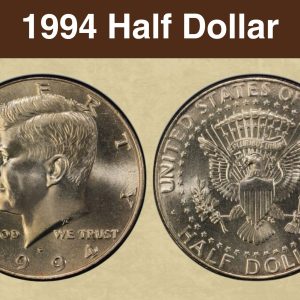
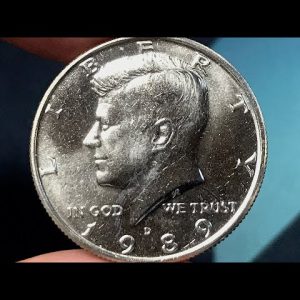
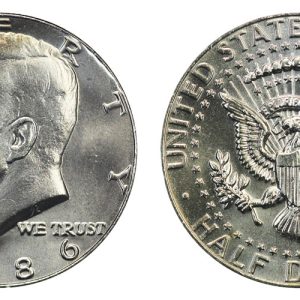
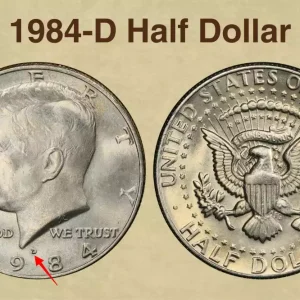
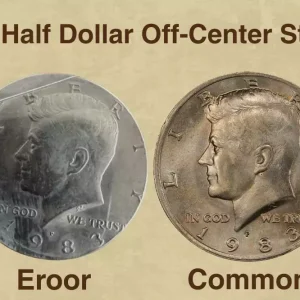
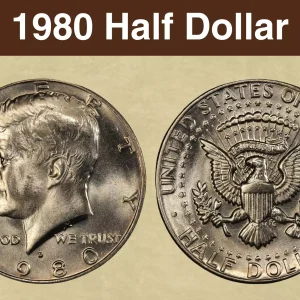
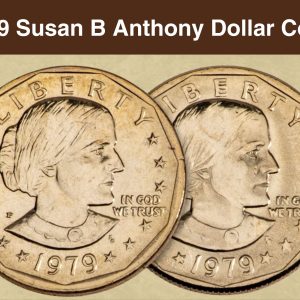
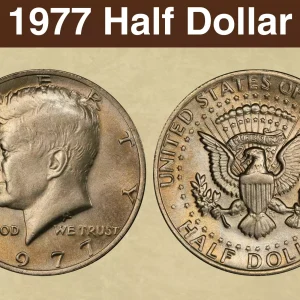
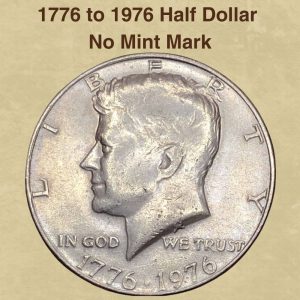
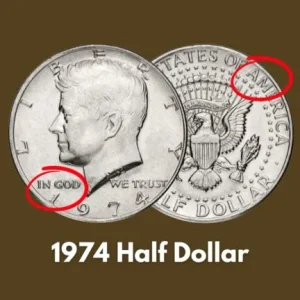
How much is a 1776 to 1976 half dollar worth with no mint mark?
A 1776 to 1976 Bicentennial half dollar with no mint mark is a common clad coin from the Philadelphia mint, worth its face value of $0.50 in circulated condition, and slightly more in uncirculated condition. The value depends on its condition, with a circulated coin worth around 50 cents and an uncirculated one potentially fetching $5 to $10 or more, though specific high-value errors or rare variations are what drive prices higher.
What is the error on 1976 half dollar?
1976 half dollar errors include double dies, off-center strikes, and grease-filled dies, which can make them valuable to collectors. Errors on the 1976-S silver Bicentennial half dollar include a double die obverse (DDO) on the regular strike coins and a double die reverse (DDR) on the proof coins. Errors on Denver-minted 1976-D coins can include mis-strikes on the mint mark or other lettering.
How much is a 1776 to 1976 silver dollar worth with no mint mark?
A 1776 1976 Eisenhower dollar with no mint mark is a valuable coin, particularly the “Type 2” proof version, which is considered one of the rarest modern U.S. coins and can be worth thousands of dollars. The more common circulating (business strike) versions without a mint mark are worth a small premium, with their value depending on their condition.
What 1976 Bicentennial dollar was struck without the S mint mark?
Jaime Hernandez: The 1976 ( Type 2) Proof Bicentennial Eisenhower Dollar coin without an “S” mint mark is probably the rarest non-error modern coin in existence. All other known 1976 Bicentennial Proof Eisenhower dollars bear an “S” mint mark as they were all produced at the San Francisco Mint.